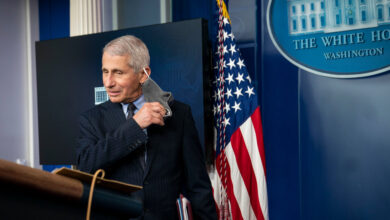Biden’s Pro-Labor Vision Goes Beyond America

President Biden ran on a promise to be the most pro-labor president ever. A year into his presidency, it is becoming clear that he is already the most pro-labor president since Franklin Delano Roosevelt.
It’s not just that he used the bully pulpit to support striking workers during an unusual flurry of strikes late last year. Nor is it that he forced out some Trump-era appointees at the National Labor Relations Board — a power no president has exercised since the 1950s. It’s not just because his Worker Organizing and Empowerment task force just released a raft of things the federal government can do to make labor organizing easier in the United States. (An example: prevent Defense Department dollars from flowing to federal contractors that engage in union busting.)
Support for labor runs so deep in the Biden administration that it is reshaping foreign policy and international trade. Failure to live up to international labor standards was cited as one of the reasons Mali recently lost the right to send duty-free goods to the United States. Improving child and forced labor conditions appeared on a list of things that India agreed to work on this year after meetings with U.S. officials. The administration has also vowed to root slave labor out of U.S. supply chains — a move that seems designed to curb imports from China’s Xinjiang region.
It’s not just lip service. The Biden administration is full of true believers. Thea Lee, a deputy under secretary for international affairs in the Department of Labor, spent years at the A.F.L.-C.I.O., trying to strengthen and enforce labor standards abroad. In the mid-2000s, the A.F.L.-C.I.O. submitted a complaint against Guatemala over violations of labor rights, including the killings of labor organizers there. Nearly all Guatemalan fruits and clothing were entering the United States duty free, thanks to the Central American Free Trade Agreement, which was supposed to better protect the right to organize. But labor leaders were still being gunned down, including the leader of a union of port workers. Ms. Lee raised the alarm with officials from the Bush and Obama administrations. Yet they listened to her as someone listens to “a TV with the sound turned off,” she told me. The fact that she is now a senior U.S. government official shows just how much Washington has changed.
In theory, raising labor standards abroad will help workers at home by leveling the playing field. Instead of forcing Americans to accept less — lower pay, fewer protections and benefits — to try to compete with sweatshop wages overseas, workers overseas should get more.
The policy is full of risks. Many companies are furious about the administration’s support for unions, especially in a year of rising prices, supply chain headaches and recalcitrant workers. And it’s not clear how well the message is resonating with workers, the vast majority of whom are not union members. Only about 10 percent of workers are represented by unions, down from about a third in the late 1970s. Mr. Biden has even been criticized from the left for not doing more for workers, namely his failure to cajole Congress to pass the PRO Act, perhaps the farthest-reaching labor legislation in half a century. Lastly, some argue that emboldening unions and pressuring trade partners to raise labor standards will make it harder for Americans to compete against China, which just concluded a trade agreement that doesn’t mention labor protections at all.
Nevertheless, the administration soldiers on under the belief that these efforts are about not just workers’ rights but the future of globalization itself — and whether it will be shaped by the needs of corporations or those of ordinary people. Globalization was once guided by a near-religious faith in free trade and the removal of barriers that companies didn’t like. And the rights of workers were treated as a side issue, if they were considered at all.
“This version of globalization is being edited,” Katherine Tai, Mr. Biden’s trade representative, told me. “And needs to be edited.”
Just how heavily it will be edited remains to be seen.
No one embodies the worker-centric philosophy more than Ms. Tai, who used the term “worker-centered trade” in a speech last summer at the A.F.L.-C.I.O.
Ms. Tai’s views on trade were formed during her years as the World Trade Organization litigator and chief trade counsel for Democrats on the House Ways and Means Committee, where she watched populist anger tank a giant free trade agreement that stretched from the Americas to Asia. Mike Froman, Barack Obama’s trade representative, had spent years negotiating the Trans-Pacific Partnership agreement behind closed doors. But when it came time to sell it to the American public and get it through Congress, many Democrats fought it tooth and nail.
“If that’s the first time you are thinking about how you are going to sell this to regular people, you’ve already lost. It’s way too late,” Ms. Tai told me. “From our perspective, you start by asking at the front end, how is this going to be good for regular people?”
Many saw it as a way for companies to send American jobs overseas, to countries where workers can be jailed for joining a union.
The sea change in Washington’s attitude about workers actually began under the Trump administration, with Bob Lighthizer, Mr. Trump’s U.S. trade representative and a Republican populist who argued for “worker focused” trade.
Mr. Lighthizer is a true believer, too. His father once worked in a steel mill, and he spent his legal career filing anti-dumping cases to try to preserve American steel mills and other domestic industries. He spoke out about the dark side of free trade agreements back when few others would listen. He even tried to join forces with Ms. Lee at the A.F.L.-C.I.O. to try to enforce labor standards in free trade agreements.
On trade, Mr. Lighthizer had more in common with Democrats than he did with the G.O.P., until Mr. Trump was elected and nominated him to the job he’d always dreamed of: renegotiating the North American Free Trade Agreement, which he blamed for the loss of hundreds of thousands of American jobs. Mr. Lighthizer worked with Democratic allies who used their leverage to achieve substantial protections for workers, including the right to join an independent union, which Mexican workers are now exercising for the first time. The Biden administration has enthusiastically enforced the labor provisions in that agreement. Ms. Tai has called it a “touchstone” for what a worker-centered trade deal could be. That makes worker-centrism one of the rare areas of agreement between some progressive Democrats and populist Trump Republicans.
Mr. Lighthizer has nothing but praise for Ms. Tai, who, he hopes, will “hold the line” against corporate pressure to go back to the old policies. “Changing the objective of trade policy away from globalization, corporate profits and efficiency, toward workers as producers, was perhaps the most important thing we did,” he told me.
It took a radical populist to tear up the decades-old consensus on trade. It’s going to take a diplomat — and maybe a miracle — to build a new one in its place.
The Times is committed to publishing a diversity of letters to the editor. We’d like to hear what you think about this or any of our articles. Here are some tips. And here’s our email: [email protected].
Follow The New York Times Opinion section on Facebook, Twitter (@NYTopinion) and Instagram.





